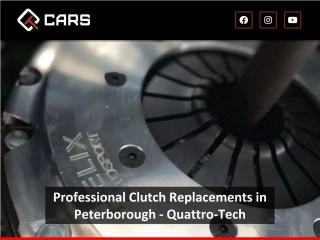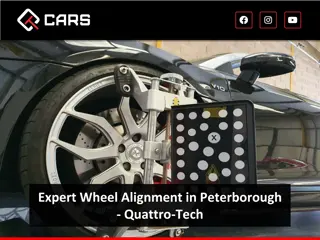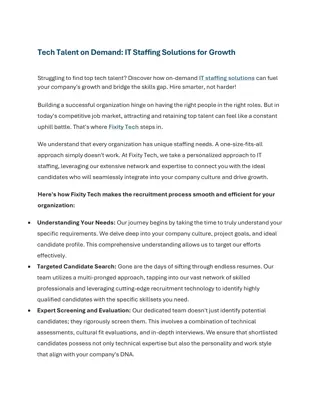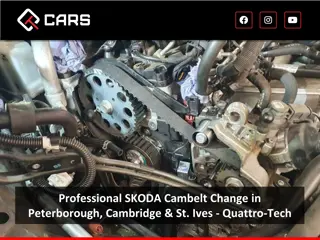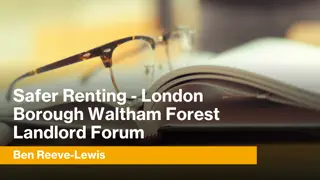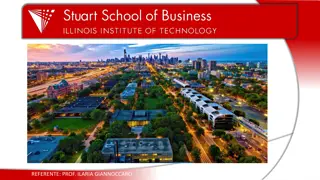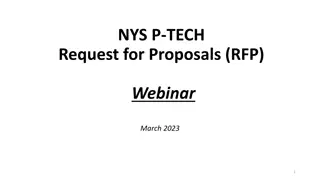
Ham Radio Technician Class Exam Preparation Tips
Get ready for your Ham Radio Technician Class exam with helpful study hints, explanations of electronic and electrical components, and practice questions. Join the Hi-Landers Ham Class instructed by Rich Bugarin W6EC. Learn about resistors, capacitors, inductors, fuses, switches, and more. Enhance your understanding of electrical circuits and components to pass the exam successfully. Study smart and ace your certification exam with expert guidance.
Download Presentation

Please find below an Image/Link to download the presentation.
The content on the website is provided AS IS for your information and personal use only. It may not be sold, licensed, or shared on other websites without obtaining consent from the author. If you encounter any issues during the download, it is possible that the publisher has removed the file from their server.
You are allowed to download the files provided on this website for personal or commercial use, subject to the condition that they are used lawfully. All files are the property of their respective owners.
The content on the website is provided AS IS for your information and personal use only. It may not be sold, licensed, or shared on other websites without obtaining consent from the author.
E N D
Presentation Transcript
Hi-Landers Ham Class Instructed by Rich Bugarin W6EC
Ham Radio Technician Class Exam preparation Power Point created by Rich Bugarin W6EC. Effective July 1, 2022 and is valid until June 30, 2026. Please send suggested changes to this presentation to: w6ec@thebugarins.com
Study Hints I suggest you read each question and only the correct answer. Read through the complete question pool at least three times before you attempt taking a practice exams. For higher impact and better results read the correct answer first then the question and again the correct answer. The key to passing the exam is to get the most questions correct using the above method the correct response will often jump out at you on test day even if you don t remember the question.
Text Color Black: Original/Official questions and information in original format (unaltered). Red: Original information text color simply changed to highlight subject. Blue: Notes and information added by Rich (W6EC).
SUBELEMENT T6 ELECTRONIC AND ELECTRICAL COMPONENTS [4 Exam Questions - 4 Groups]
T6A - Fixed and variable resistors; Capacitors; Inductors; Fuses; Switches; Batteries #19 of 35
T6A01 What electrical component opposes the flow of current in a DC circuit? A. Inductor B. Resistor C. Inverter D. Transformer
T6A01 What electrical component opposes the flow of current in a DC circuit? A. Inductor B. Resistor C. Inverter D. Transformer
T6A02 What type of component is often used as an adjustable volume control? A. Fixed resistor B. Power resistor C. Potentiometer D. Transformer
T6A02 What type of component is often used as an adjustable volume control? A. Fixed resistor B. Power resistor C. Potentiometer D. Transformer
T6A03 What electrical parameter is controlled by a potentiometer? A. Inductance B. Resistance C. Capacitance D. Field strength
T6A03 What electrical parameter is controlled by a potentiometer? A. Inductance B. Resistance C. Capacitance D. Field strength
T6A04 What electrical component stores energy in an electric field? A. Varistor B. Capacitor C. Inductor D. Diode
T6A04 What electrical component stores energy in an electric field? A. Varistor B. Capacitor C. Inductor D. Diode
T6A05 What type of electrical component consists of conductive surfaces separated by an insulator? A. Resistor B. Potentiometer C. Oscillator D. Capacitor
T6A05 What type of electrical component consists of conductive surfaces separated by an insulator? A. Resistor B. Potentiometer C. Oscillator D. Capacitor
T6A06 What type of electrical component stores energy in a magnetic field? A. Varistor B. Capacitor C. Inductor D. Diode
T6A06 What type of electrical component stores energy in a magnetic field? A. Varistor B. Capacitor C. Inductor D. Diode
T6A07 What electrical component is typically constructed as a coil of wire? A. Switch B. Capacitor C. Diode D. Inductor
T6A07 What electrical component is typically constructed as a coil of wire? A. Switch B. Capacitor C. Diode D. Inductor
T6A08 What is the function of an SPDT switch? A. A single circuit is opened or closed B. Two circuits are opened or closed C. A single circuit is switched between one of two other circuits D. Two circuits are each switched between one of two other circuits
T6A08 What is the function of an SPDT switch? A. A single circuit is opened or closed B. Two circuits are opened or closed C. A single circuit is switched between one of two other circuits D. Two circuits are each switched between one of two other circuits
T6A09 What electrical component is used to protect other circuit components from current overloads? A. Fuse B. Thyratron C. Varactor D. All these choices are correct
T6A09 What electrical component is used to protect other circuit components from current overloads? A. Fuse B. Thyratron C. Varactor D. All these choices are correct
T6A10 Which of the following battery chemistries is rechargeable? A. Nickel-metal hydride B. Lithium-ion C. Lead-acid D. All these choices are correct
T6A10 Which of the following battery chemistries is rechargeable? A. Nickel-metal hydride B. Lithium-ion C. Lead-acid D. All these choices are correct
T6A11 Which of the following battery chemistries is not rechargeable? A. Nickel-cadmium B. Carbon-zinc C. Lead-acid D. Lithium-ion
T6A11 Which of the following battery chemistries is not rechargeable? A. Nickel-cadmium B. Carbon-zinc C. Lead-acid D. Lithium-ion
T6A12 What type of switch is represented by component 3 in figure T-2? A. Single-pole single-throw B. Single-pole double-throw C. Double-pole single-throw D. Double-pole double-throw
T6A12 What type of switch is represented by component 3 in figure T-2? A. Single-pole single-throw (switch) B. Single-pole double-throw C. Double-pole single-throw D. Double-pole double-throw
T6B Semiconductors: basic principles and applications of solid state devices, diodes and transistors #20 of 35
T6B01 Which is true about forward voltage drop in a diode? A. It is lower in some diode types than in others B. It is proportional to peak inverse voltage C. It indicates that the diode is defective D. It has no impact on the voltage delivered to the load
T6B01 Which is true about forward voltage drop in a diode? A. It is lower in some diode types than in others B. It is proportional to peak inverse voltage C. It indicates that the diode is defective D. It has no impact on the voltage delivered to the load Forward Voltage for a Silicon Diode is about 0.7V for Germanium it is about 0.3V
T6B02 What electronic component allows current to flow in only one direction? A. Resistor B. Fuse C. Diode D. Driven element
T6B02 What electronic component allows current to flow in only one direction? A. Resistor B. Fuse C. Diode D. Driven element A Diode (AKA Rectifier) functions as an Electronic Check Valve.
T6B03 Which of these components can be used as an electronic switch? A. Varistor B. Potentiometer C. Transistor D. Thermistor
T6B03 Which of these components can be used as an electronic switch? A. Varistor B. Potentiometer C. Transistor D. Thermistor
T6B04 Which of the following components can consist of three regions of semiconductor material? A. Alternator B. Transistor C. Triode D. Pentagrid converter
T6B04 Which of the following components can consist of three regions of semiconductor material? A. Alternator B. Transistor C. Triode D. Pentagrid converter
T6B05 What type of transistor has a gate, drain, and source? A. Varistor B. Field-effect C. Tesla-effect D. Bipolar junction
T6B05 What type of transistor has a gate, drain, and source? A. Varistor B. Field-effect C. Tesla-effect D. Bipolar junction
T6B06 How is the cathode lead of a semiconductor diode often marked on the package? A. With the word "cathode" B. With a stripe C. With the letter C D. With the letter K
T6B06 How is the cathode lead of a semiconductor diode often marked on the package? A. With the word "cathode" B. With a stripe C. With the letter C D. With the letter K
T6B07 What causes a light-emitting diode (LED) to emit light? A. Forward current B. Reverse current C. Capacitively-coupled RF signal D. Inductively-coupled RF signal
T6B07 What causes a light-emitting diode (LED) to emit light? A. Forward current B. Reverse current C. Capacitively-coupled RF signal D. Inductively-coupled RF signal Forward typically means Pass Current Reverse typically means Block Current
T6B08 What does the abbreviation FET stand for? A. Frequency Emission Transmitter B. Fast Electron Transistor C. Free Electron Transmitter D. Field Effect Transistor
T6B08 What does the abbreviation FET stand for? A. Frequency Emission Transmitter B. Fast Electron Transistor C. Free Electron Transmitter D. Field Effect Transistor
T6B09 What are the names for the electrodes of a diode? A. Plus and minus B. Source and drain C. Anode and cathode D. Gate and base
T6B09 What are the names for the electrodes of a diode? A. Plus and minus B. Source and drain C. Anode and cathode D. Gate and base Anode Cathode


